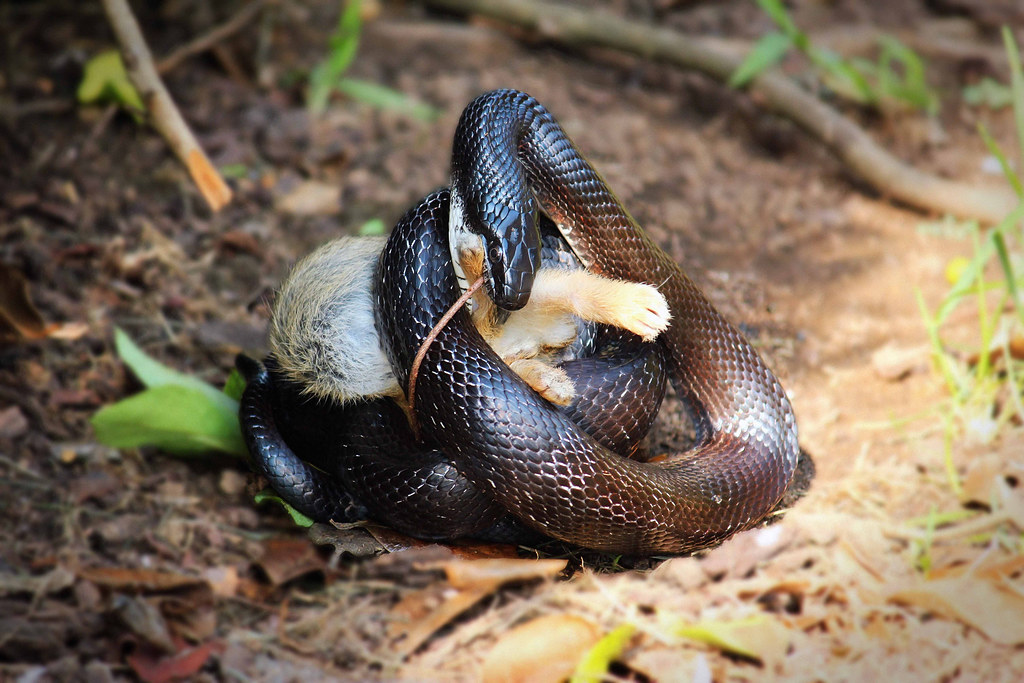DuxorW
Derailer of Threads
I have decided to experiment with Reptilinks on some of my hatchlings and smaller corn snakes with the expectation that, since they are predicted to have up to twice the calories of the equivalent-sized rodent, I will see faster growth if I feed reptilinks on the same schedule as I would normally feed pinky mice. I do not anticipate any problems, as the links seem like they should be easy to digest.
I am not trying to powerfeed my snakes, but I do like to get them out of that more delicate hatchling phase and onto large fuzzies as as soon as I can. The advantage to these links is that they contain more calories in a similarly-sized package. I would not want to feed my hatchlings double pinks or larger pinks at this size out of fear of a regurge. I do not think this will be a problem with the links. In fact, if a snake does regurge a mouse, I wonder if the reptilinks, being easy to digest and containing more calories, might be beneficial to the snake until they can get back on mice?
You can learn more about the links at their website.
I plan on conducting the experiment using the following snakes. The phenotypes just serve as identifiers for me. The groups have roughly even mixtures of both males and females. The variability within the mouse-fed group will give me an idea of the extent of snake-to-snake variability in growth rate so that I can more accurately determine whether any increase in growth rate in the reptilink group is due to chance alone.
I will feed each animal every 7 days and record its weight before feeding. Thus I will calculate how much weight the snake gains with each feeding, as well as how long it takes each snake to grow from different milestones such as 50 to 100g.
Critically for the interpretation of the data, I will measure and record the weight of each mouse/reptilink meal and try to minimize the variation in food weight at each feeding.
Reptilink rabbit/chicken
Lava lavender m
Sk stripe f
Saffron f
Lava blood m
Orchid f
Pep stripe f1
Ero
Lava cinder
Pink snow
Sk amel f1
Mice group
Lava tess m
Sk hypo motley f
Pep stripe f2
Lava tess f
Sunkissed lava m
Ultramel okeetee f
Extreme ultramel f
Cinder motley
Sk amel f2
Sk bloodred stripe
I am not trying to powerfeed my snakes, but I do like to get them out of that more delicate hatchling phase and onto large fuzzies as as soon as I can. The advantage to these links is that they contain more calories in a similarly-sized package. I would not want to feed my hatchlings double pinks or larger pinks at this size out of fear of a regurge. I do not think this will be a problem with the links. In fact, if a snake does regurge a mouse, I wonder if the reptilinks, being easy to digest and containing more calories, might be beneficial to the snake until they can get back on mice?
You can learn more about the links at their website.
I plan on conducting the experiment using the following snakes. The phenotypes just serve as identifiers for me. The groups have roughly even mixtures of both males and females. The variability within the mouse-fed group will give me an idea of the extent of snake-to-snake variability in growth rate so that I can more accurately determine whether any increase in growth rate in the reptilink group is due to chance alone.
I will feed each animal every 7 days and record its weight before feeding. Thus I will calculate how much weight the snake gains with each feeding, as well as how long it takes each snake to grow from different milestones such as 50 to 100g.
Critically for the interpretation of the data, I will measure and record the weight of each mouse/reptilink meal and try to minimize the variation in food weight at each feeding.
Reptilink rabbit/chicken
Lava lavender m
Sk stripe f
Saffron f
Lava blood m
Orchid f
Pep stripe f1
Ero
Lava cinder
Pink snow
Sk amel f1
Mice group
Lava tess m
Sk hypo motley f
Pep stripe f2
Lava tess f
Sunkissed lava m
Ultramel okeetee f
Extreme ultramel f
Cinder motley
Sk amel f2
Sk bloodred stripe
Last edited:



